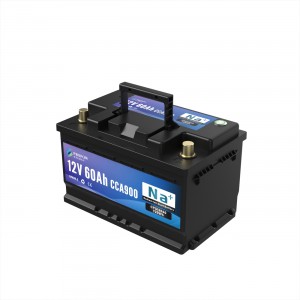1. Raw Material Costs
Sodium (Na)
- Abundance: Sodium is the 6th most abundant element in Earth’s crust and is readily available in seawater and salt deposits.
- Cost: Extremely low compared to lithium — sodium carbonate is typically $40–$60 per ton, while lithium carbonate is $13,000–$20,000 per ton (as of recent market data).
- Impact: Major cost advantage in raw material acquisition.
Cathode Materials
- Sodium-ion batteries typically use:
- Prussian blue analogs (PBAs)
- Sodium iron phosphate (NaFePO₄)
- Layered oxides (e.g., Na₀.₆₇[Mn₀.₅Ni₀.₃Fe₀.₂]O₂)
- These materials are cheaper than lithium cobalt oxide or nickel manganese cobalt (NMC) used in Li-ion batteries.
Anode Materials
- Hard carbon is the most common anode material.
- Cost: Cheaper than graphite or silicon used in Li-ion batteries, as it can be derived from biomass (e.g., coconut shells, wood).
2. Manufacturing Costs
Equipment and Infrastructure
- Compatibility: Sodium-ion battery manufacturing is mostly compatible with existing lithium-ion battery production lines, minimizing CAPEX (Capital Expenditure) for manufacturers transitioning or scaling.
- Electrolyte and Separator Costs: Similar to Li-ion, though optimization for Na-ion is still evolving.
Energy Density Impact
- Sodium-ion batteries have lower energy density (~100–160 Wh/kg vs. 180–250 Wh/kg for Li-ion), which may increase cost per unit of energy stored.
- However, cycle life and safety characteristics can offset long-term operational costs.
3. Resource Availability and Sustainability
Sodium
- Geopolitical Neutrality: Sodium is globally distributed and not concentrated in conflict-prone or monopolized regions like lithium, cobalt, or nickel.
- Sustainability: High — extraction and refinement have less environmental impact than lithium mining (especially from hard rock sources).
Lithium
- Resource Risk: Lithium faces price volatility, limited supply chains, and high environmental costs (water-intensive extraction from brines, CO₂ emissions).
4. Scalability and Supply Chain Impact
- Sodium-ion technology is highly scalable due to raw material availability, low cost, and reduced supply chain constraints.
- Mass adoption could relieve pressure on lithium supply chains, especially for stationary energy storage, two-wheelers, and low-range EVs.
Conclusion
- Sodium-ion batteries offer a cost-effective, sustainable alternative to lithium-ion batteries, particularly suited for grid storage, low-cost EVs, and developing markets.
- As technology matures, manufacturing efficiency and energy density improvements are expected to further lower costs and expand applications.
Would you like to see a forecast of sodium-ion battery cost trends over the next 5–10 years or a use-case analysis for specific industries (e.g., EVs, stationary storage)?
Post time: Sep-15-2025








